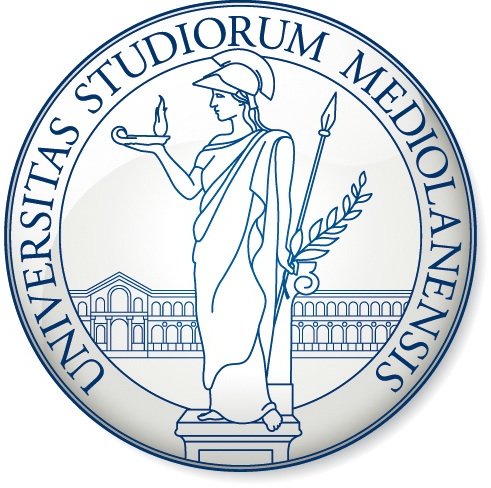Milan is a world-renowned city that offers top-quality education in the field of medicine. It is home to the International Medical School (IMS) of the University of Milan, which is one of the top medical schools in Europe. Studying medicine in Milan is a great opportunity for students who want to receive a high-quality education while experiencing the rich culture and history of Italy.
Content Quick Navigation
The International Medical School (IMS)
Students who are considering pursuing a career in medicine should definitely consider the International Medical School (IMS) at the University of Milan. With a world-renowned reputation for excellence, the IMS offers a unique opportunity to study medicine in Italy with an English-language program specifically designed for international students. The IMS curriculum combines rigorous academics with practical experience, providing students with a well-rounded education that prepares them for success in their future careers. Additionally, the IMS is known for its supportive community, which offers a range of resources and services to help students adjust to life in Italy and succeed academically and socially. With experienced professors, hands-on clinical experience, and a vibrant student body, the IMS is the perfect choice for students who are passionate about medicine and want to thrive in a dynamic and stimulating environment.
The History of The University of Milano Statale
The University of Milan, also known as ‘La Statale’, is a relatively young university in Italy, having been founded in 1924. The university was the result of the efforts of doctor and gynaecologist Luigi Mangiagalli, who had a long-held dream of creating a university for Lombardy’s regional capital. Prior to its founding, the traditional university faculties were housed at the University of Pavia, which was established in the fourteenth century and was the main educational center in northern Italy.
Over the centuries, however, numerous educational institutions and schools of excellence were established in Milan and later incorporated under the University of Milan. These included the Academy of Letters and Science, which laid the foundations for the Faculty of Humanities, as well as the Palatine Schools, established in the seventeenth century and numbering intellectuals and scholars such as Paolo Frisi, Cesare Beccaria, and Giuseppe Parini among its teachers. Other schools incorporated under the University of Milan included the Schools of Advanced Studies in Veterinary Medicine and Agriculture, the Brera Astronomical Observatory, and the Clinical Specialization Institutes established in 1906 for the training of young doctors.
Facilities and Resources
The International Medical School (IMS) at the University of Milan boasts state-of-the-art facilities that are sure to enhance your academic experience. The school’s modern classrooms, laboratories, and libraries are equipped with cutting-edge technology, making it easy to stay up-to-date with the latest advancements in the field of medicine. As a student, this is incredibly important because it means you’ll have access to a wealth of resources that will help you excel in your studies. From online databases to medical journals and textbooks, you’ll have everything you need to succeed right at your fingertips. But the IMS’s facilities are about more than just academic resources – they also create a comfortable and supportive learning environment. With spacious classrooms and well-equipped laboratories, you’ll have plenty of room to learn and explore. The IMS’s libraries are also a great place to study and collaborate with other students. And with a strong network of partnerships with hospitals and research institutions in Milan, you’ll have the opportunity to gain practical experience and conduct research in real-world settings.
Curriculum and Timetable
The IMS curriculum is designed to provide students with a comprehensive understanding of the medical sciences. The program consists of six years of study, which includes classroom lectures, laboratory work, and practical experience in hospitals and clinics. The first three years of the program focus on basic medical sciences, while the last three years focus on clinical medicine.
| Year | Subjects |
| 1st | Anatomy, Physiology, Biochemistry, Medical Biology |
| 2nd | Pathology, Pharmacology, Medical Informatics |
| 3rd | Clinical Practice, Internal Medicine, Surgery, Pediatrics |
| 4th | Clinical Practice, Gynecology and Obstetrics, Psychiatry, Forensic Medicine |
| 5th | Clinical Practice, Emergency Medicine, Radiology, Oncology |
| 6th | Clinical Practice, Neurology, Dermatology, Ophthalmology, Otorhinolaryngology |
The curriculum is designed to provide a comprehensive understanding of the medical field, with a focus on both theoretical and practical knowledge. In the first two years, students learn basic subjects such as Anatomy, Physiology, Biochemistry, Pathology, and Pharmacology, as well as Medical Informatics. The third and fourth years focus on clinical practice, with students learning the key aspects of internal medicine, surgery, paediatrics, gynaecology and obstetrics, psychiatry, and forensic medicine. The fifth and sixth years continue with clinical practice, including emergency medicine, radiology, oncology, neurology, dermatology, ophthalmology, and otorhinolaryngology.
Schedule
The school schedule starts at 8:30 am on Monday to Friday, but the exact schedule can change depending on the school year. During the first few years, students usually attend classes until around 3-4 pm with short breaks and a lunch break in between. In the later years, the schedule can vary greatly and sometimes classes can go on until 6:30 pm.
Overall, the IMS – University of Milan syllabus is designed to provide students with a comprehensive understanding of the medical field, equipping them with the skills and knowledge necessary to become successful medical professionals.
Tuition Fees and cost
| Expense | Cost (EUR) |
| Tuition Fees | €0 to €3,500 (depending on Income) |
| Student Housing | €400-€700 |
| Food and Groceries | €250-€350 |
| Transportation | €22-€35 |
| Books and Materials | €100-€200 |
| Health Insurance | €150-€200 |
| Mobile Phone Plan | €20-€30 |
| Internet and Utilities | €50-€100 |
| Leisure Activities | €100-€200 |
It is worth noting that the cost of living in Milan is generally lower compared to other major European cities such as London or Paris. The cost of food and groceries is relatively affordable due to the abundance of local markets and supermarkets. In addition, public transportation is inexpensive, with a monthly bus pass costing only €22-€35. The ISEE (Indicatore della Situazione Economica Equivalente) is a financial aid system used in Italy that takes into account the economic and social status of the student and their family. The ISEE is used to determine eligibility for scholarships, financial aid, and other forms of assistance. This system allows students who come from low-income families to receive financial support to help cover the cost of tuition fees, housing, and other living expenses. The University of Milan offers several scholarships to students enrolled in the IMS program, including merit-based scholarships, need-based scholarships, and scholarships for international students. These scholarships are designed to help cover the cost of tuition fees and living expenses. Students can apply for these scholarships through the university’s website or through their respective departments. Overall, the cost of studying and living in Milan is relatively affordable compared to other European cities, and with the assistance of scholarships and financial aid, students can pursue their education at the University of Milan IMS program without facing excessive financial burden.
Location and Campus
The University of Milan is located in Milan, Italy’s bustling financial capital. With a population of over 1.3 million people, Milan is the second-most populous city in Italy and is known for its fashion, culture, and history. The university itself is spread across nine campuses, with the Faculty of Medicine and Surgery being one of the largest and most respected. The Faculty of Medicine and Surgery is spread across two main campuses: the main campus in Città Studi and the Bicocca campus, both of which are easily accessible by public transportation.
The Città Studi campus is the university’s main campus and is located in the eastern part of Milan. It is home to the Faculty of Medicine and Surgery as well as several other faculties, including the Faculty of Engineering and the Faculty of Science. The Bicocca campus, located in the northern part of Milan, is home to the Faculty of Medicine and Surgery’s Department of Biomedical Sciences.
Faculty and Staff
The University of Milan is home to an impressive roster of faculty members and staff. With over 600 professors and researchers, many of whom are internationally renowned in their fields, the faculty of the Faculty of Medicine and Surgery is truly exceptional. The faculty is made up of doctors, scientists, and researchers who are dedicated to providing students with the best possible education and training.
The faculty is supported by a team of highly qualified administrative staff who are responsible for managing the day-to-day operations of the university. This team includes administrators, librarians, and technical staff who ensure that students have access to the best possible resources and support throughout their academic journey.
Research and Innovation
At the University of Milan, research and innovation are a way of life. The Faculty of Medicine and Surgery is involved in a number of cutting-edge research projects in fields such as regenerative medicine, oncology, and neuroscience. By collaborating with a number of international institutions and organisations, this university is able to facilitate research and innovation on a global scale.
One of the most exciting research projects currently underway at the university is the Milan Project, which is a collaborative effort between the University of Milan and a number of international research institutions. The Milan Project aims to develop new treatments for diseases such as cancer and Alzheimer’s by using advanced technologies
Weather
Milan, the city where the IMS – University of Milan is located, is known for its pleasant weather, especially during the spring and summer seasons. Students who attend this renowned medical school in Italy can take advantage of the weather by participating in various outdoor activities and exploring the city. During the spring season, the weather in Milan is typically mild, with temperatures ranging from 10 to 20°C (50 to 68°F). This is the perfect time for students to explore the many parks and gardens in the city, such as the Parco Sempione, which is located near the University of Milan campus. Students can also take a stroll through the historic centre of Milan and admire the beautiful architecture and cultural landmarks. In the summer, the weather in Milan can get quite warm, with temperatures reaching up to 30°C (86°F). However, this is a great time for students to visit the nearby beaches and lakes, such as Lake Como or Lake Garda, which are just a short train ride away from Milan. Students can also enjoy outdoor concerts, festivals, and other events that take place throughout the city during the summer months. Aside from outdoor activities, students can also take advantage of the many indoor activities that Milan has to offer, such as visiting museums, art galleries, and theatres. The city is home to some of the world’s most renowned museums, including the Pinacoteca di Brera and the Museo del Novecento, both of which are located within walking distance of the University of Milan campus.
Milan’s Must-Visit Touristic Places: Top 18
Milan is a city rich in history, culture, and beauty, making it a must-visit destination for travellers from all over the world. Here are the top 18 must-visit places in Milan:
- The Duomo: This iconic cathedral is a must-visit attraction in Milan. The entrance fee to visit the cathedral is €3 for adults and free for children under 6. The easiest way to reach the Duomo is by metro or bus.
- Galleria Vittorio Emanuele II: This stunning shopping arcade is located next to the Duomo and is free to enter. It is a great place to grab a coffee or an aperitivo and admire the beautiful architecture.
- La Scala: Milan’s famous opera house is a must-see for music lovers. Prices for opera and ballet performances vary, but a guided tour of the theatre costs €10.
- Castello Sforzesco: This historic castle houses several museums and art collections, including works by Michelangelo and Leonardo da Vinci. The entrance fee is €5 for adults and free for children under 18.
- Pinacoteca di Brera: This art museum features an impressive collection of Italian Renaissance masterpieces. The entrance fee is €12 for adults and €6 for students.
- Navigli: This picturesque neighbourhood is known for its canals and lively nightlife. It’s free to walk around and explore, but prices for food and drinks vary.
- Santa Maria delle Grazie: This church is home to Leonardo da Vinci’s famous painting, The Last Supper. Advance reservations are required and tickets cost €12.
- San Siro Stadium: Football fans won’t want to miss a tour of the legendary San Siro Stadium. Guided tours start at €18.
- Sempione Park: This large park is a great place to relax and enjoy a picnic. It’s free to enter and is located next to the Castello Sforzesco.
- Piazza Mercanti: This historic square features several important buildings and is a great place to soak up some Milanese history. It’s free to visit.
- The Brera District: This trendy neighbourhood is known for its boutiques, galleries, and charming streets. It’s free to explore, but prices for shopping and dining vary.
- Porta Ticinese: This bustling neighbourhood is known for its street art and vibrant energy. It’s free to walk around and explore, but prices for food and drinks vary.
- The Modern Art Gallery: This museum features an impressive collection of modern and contemporary art. The entrance fee is €10 for adults and €5 for students.
- The Poldi Pezzoli Museum: This historic house museum features an extensive collection of decorative arts and paintings. The entrance fee is €12 for adults and €8 for students.
- The Royal Palace of Milan: This historic palace is home to several museums and art collections. The entrance fee is €12 for adults and €6 for students.
- Fondazione Prada: This contemporary art museum features works by some of the world’s most famous artists. The entrance fee is €15.
- CityLife: This modern residential and commercial district is home to several skyscrapers and a large park. It’s free to visit.
- The Fashion District: Milan is known for its fashion industry, and this district is home to some of the city’s most famous fashion boutiques. Prices for shopping and dining vary.
These must-visit places in Milan offer a glimpse into the city’s rich history and culture, attracting millions of visitors every year. From stunning architectural wonders to world-renowned museums and art galleries, Milan has something for everyone.
Milano IMS Minimum IMAT Scores
The IMS – University of Milan is widely known as the most competitive Medical School in Italy to get into. One of the key reasons for this is the high scores that applicants are required to achieve in the IMAT exam. The IMAT (International Medical Admissions Test) is a standardised test that assesses critical thinking and problem-solving abilities, as well as scientific knowledge, for those who wish to study medicine in Italy.
To be admitted to the IMS program at UNIMI, applicants need to score highly in the IMAT exam. The scores required for admission vary for EU and non-EU students. The following table outlines the minimum scores required for admission to the IMS program at UNIMI:
| Year | Minimum Score (Non-European) | European Scores (First/Last Round) |
|---|---|---|
| 2020 | 47.8 | First: 57.8 / Last: 45 |
| 2021 | 51.5 | First: 51.5 / Last: 43.3 |
| 2022 | 51.8 | First: 52 / Last: 44.3 |
| 2023 | 60.2 | First: 47.6 / Last: 46.6 |
It is important to note that these scores are just the minimum requirements and competition is extremely high, with many students scoring well above these thresholds. Therefore, it is recommended that applicants strive to achieve the highest possible score to increase their chances of admission to this prestigious program at UNIMI.
Conclusion
In conclusion, the IMS – University of Milan offers a prestigious and competitive medical education program in Italy. With world-renowned faculty members, state-of-the-art facilities, and an innovative curriculum, students are well-equipped to succeed in the medical field. The university provides a supportive environment that nurtures the academic and personal growth of students, while offering ample opportunities for research and practical experience. Additionally, the city of Milan offers a rich cultural experience, with countless historical and modern attractions to explore. Whether you are an Italian student or an international student, IMS – University of Milan offers an excellent opportunity to embark on a rewarding career in medicine.

















